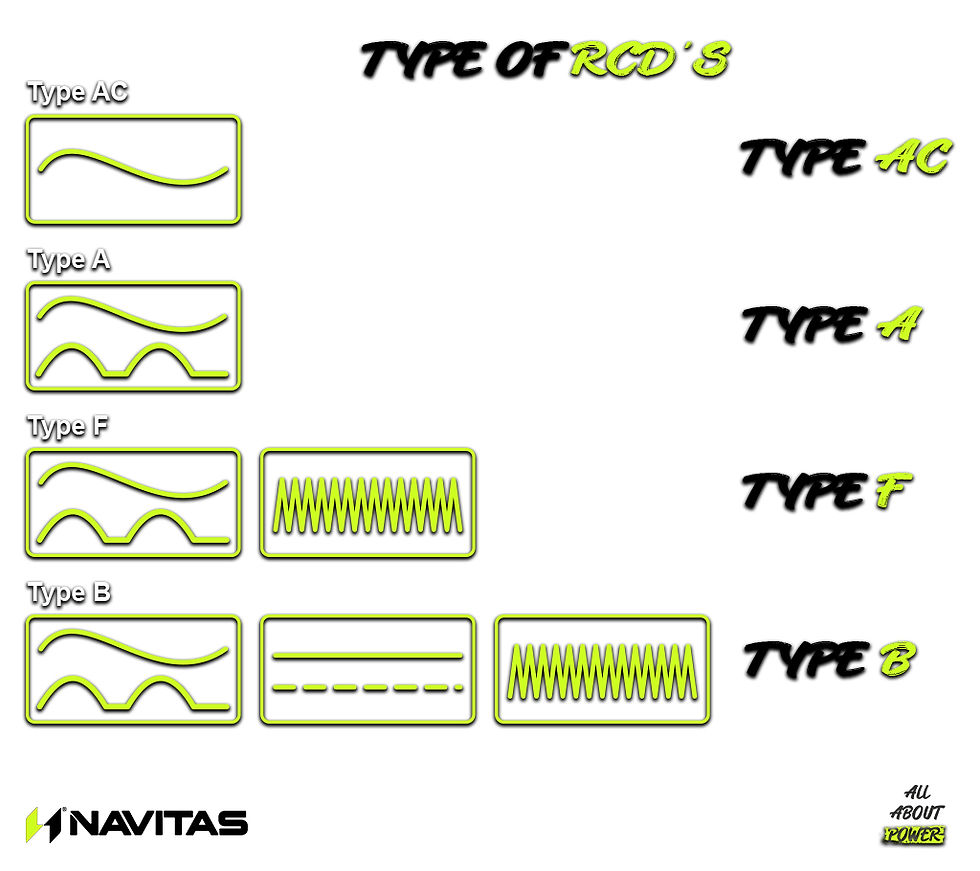Which Type of RCD Do I Need? A Practical Guide for Electricians under BS 7671
- Navitas CP

- Oct 10
- 2 min read

Residual Current Devices (RCDs) are a cornerstone of modern protection. Under BS 7671 they are required across almost all domestic installs, protecting against electric shock and reducing fire risk caused by earth leakage.
For electricians, the challenge is not whether to fit an RCD. The challenge is making sure the right type is in place for the loads connected. Many existing installs still rely on legacy Type AC devices and while these may still operate, they are no longer considered suitable for today’s appliances.
Upgrading is not as simple as swapping every RCD for a Type A. Different types of devices serve different applications and understanding those differences is what separates compliance from compromise.
The Legacy Problem: Type AC in Existing Installs
Type AC RCDs were once the standard and thousands are still in service across UK homes. They only detect pure sinusoidal AC leakage.
Modern loads such as washing machines, LED lighting, EV chargers and PV inverters produce pulsating or smooth DC. This can blind an AC device, leaving the circuit unprotected even though the RCD appears healthy.
When carrying out EICRs, additions or alterations, electricians should:
⚫️🟢 Identify any legacy Type AC devices
⚫️🟢 Record their presence on the report
⚫️🟢 Recommend upgrade where appropriate
Why Type A Is Not Always the Answer
Most manufacturers now supply Type A as standard. These detect both AC and pulsating DC leakage, making them the natural baseline for new installs.
However, not every situation can be covered by Type A. Certain appliances, drives and renewable systems demand more advanced protection. Assuming Type A covers everything is a common mistake.
The Other RCD Types You Will See in Practice
Type F
Detects AC, pulsating DC and frequencies up to 1 kHz.Application: Single phase variable speed drives, white goods and heat pumps.Why it matters: Some appliances with motors and inverter drives can trip or blind Type A devices.
Type B
Detects AC, pulsating DC and smooth DC.Application: EV chargers, PV systems, battery storage and VFDs.Why it matters: Renewable and storage technologies introduce smooth DC that only Type B can handle.

Practical On Site Guidance
⚫️🟢 Always check appliance manufacturer’s data sheets for the required RCD symbol
⚫️🟢 Do not extend new circuits onto legacy AC devices
⚫️🟢 Consider futureproofing with Type B as EV and PV grow in use
⚫️🟢 Record your rationale for RCD selection in the EIC or EICR
Best Practice Checklist
⚫️🟢 Identify legacy AC devices during inspections and upgrades
⚫️🟢 Use Type A as a baseline but do not assume it covers all cases
⚫️🟢 Fit Type F for drives, motors and white goods where specified
⚫️🟢 Fit Type B for EV, PV, heat pumps and storage applications
⚫️🟢 Always follow BS 7671 and manufacturer instructions
Final Word
RCDs are not one size fits all. While Type A has become the new baseline, electricians still encounter legacy Type AC devices and must know when a higher grade device is required. Choosing correctly keeps installs compliant and customers safe.
👉 For deeper technical guidance and diagrams, download our full RCD Types White Paper.
Comments